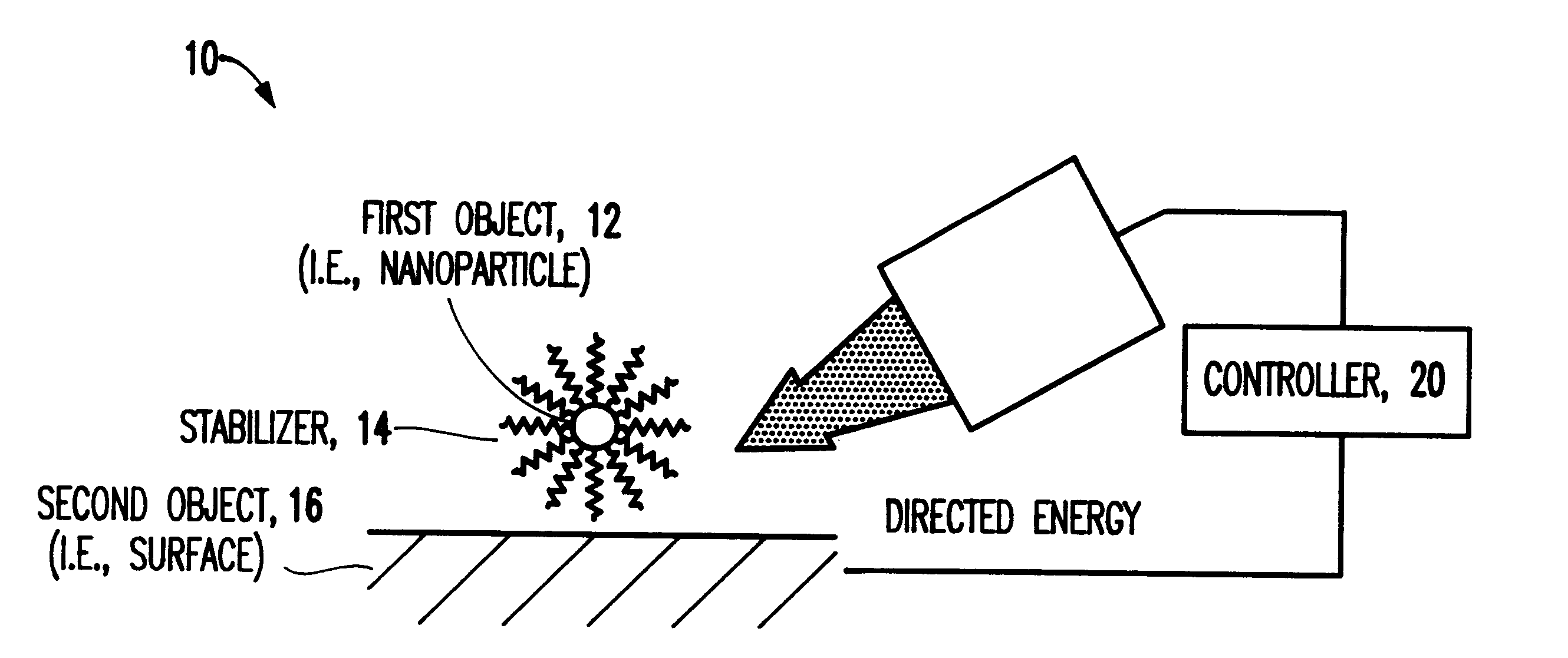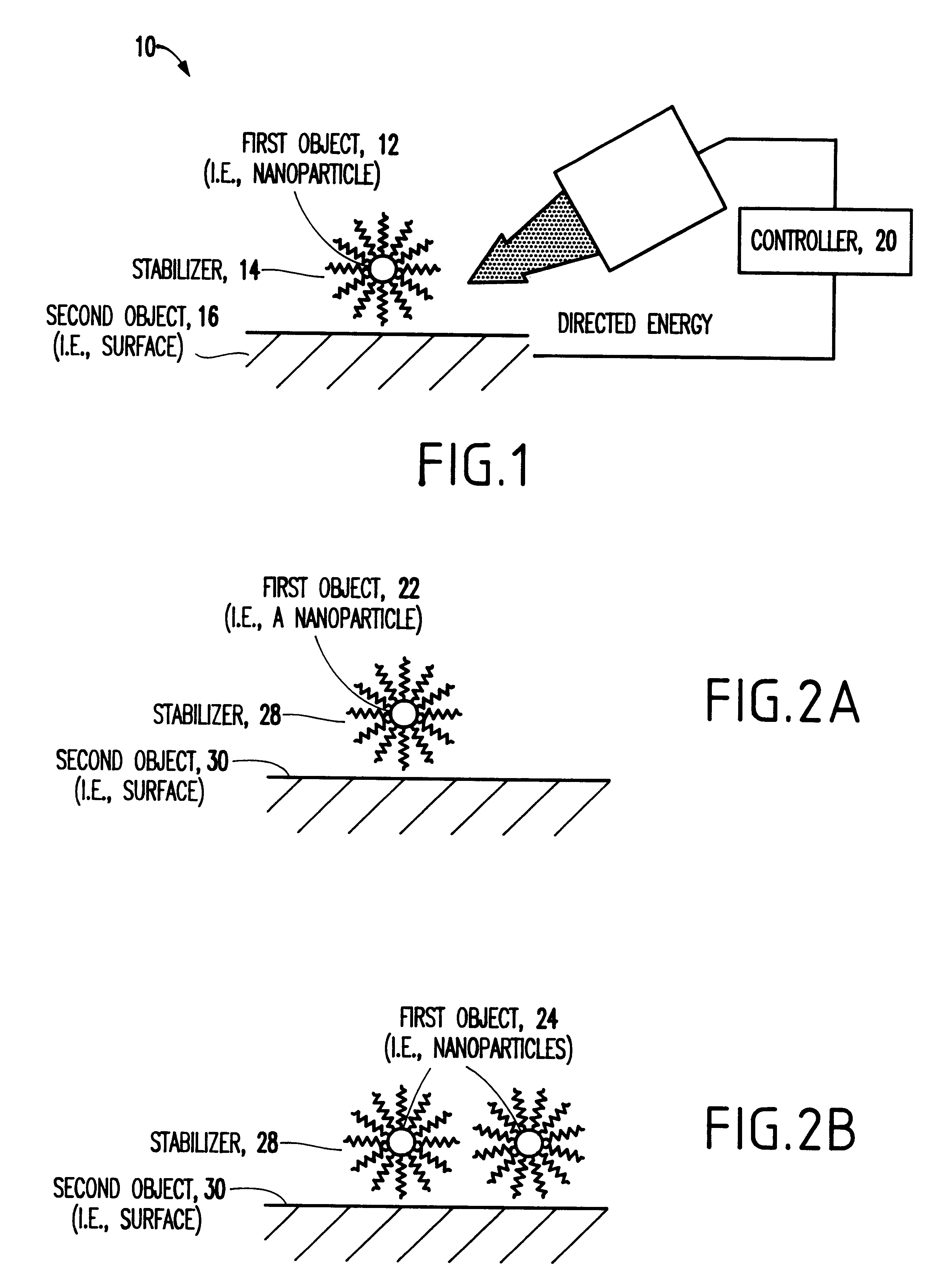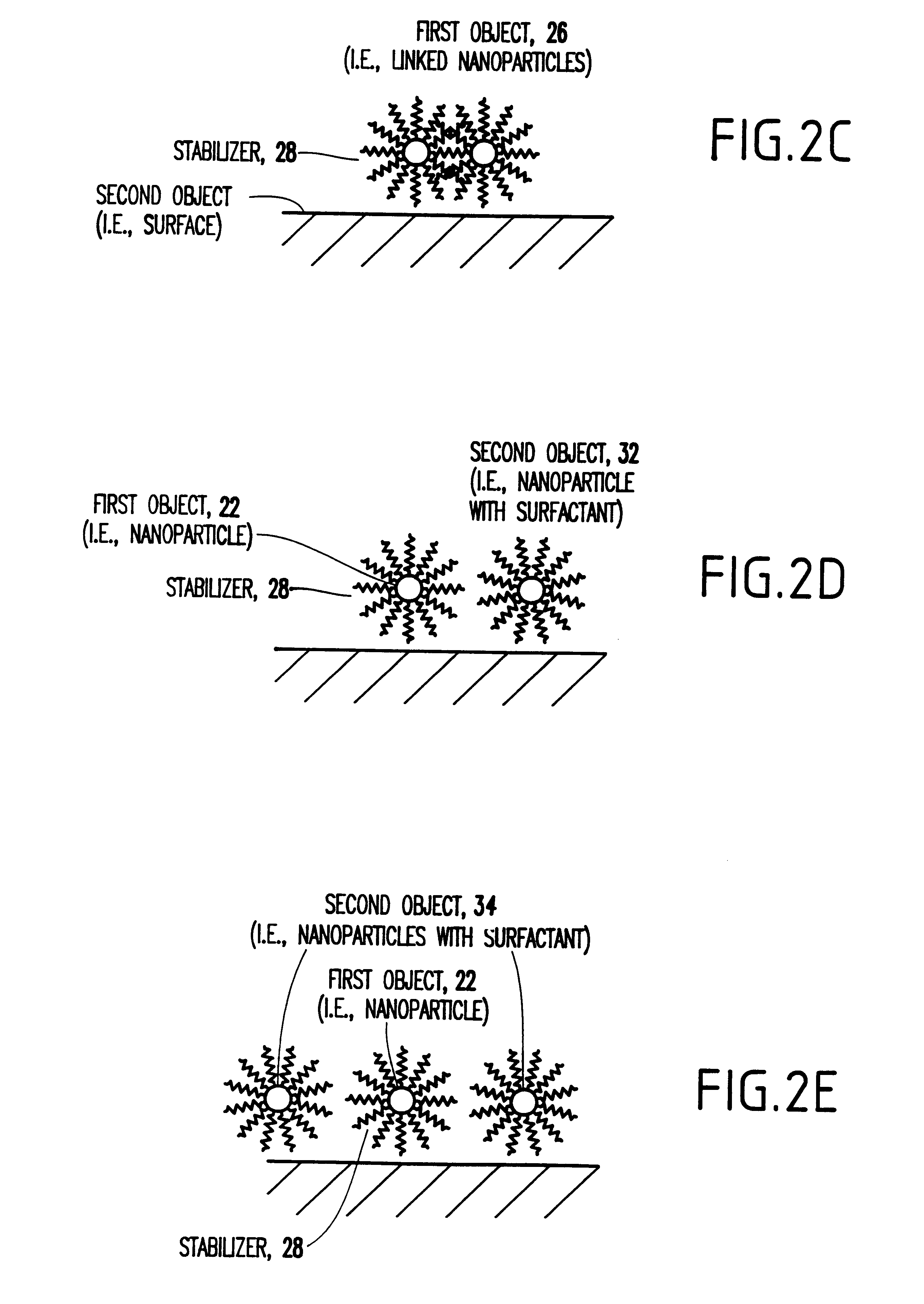Method and apparatus for linking and/or patterning self-assembled objects
a self-assembled object and method technology, applied in the field of methods and apparatus for linking and/or patterning self-assembled objects, can solve the problems of complex and expensive lithographic processes, end of scaling approach, loss of stored information,
- Summary
- Abstract
- Description
- Claims
- Application Information
AI Technical Summary
Benefits of technology
Problems solved by technology
Method used
Image
Examples
Embodiment Construction
The present invention provides a method and an apparatus for linking and / or patterning self-assembled object(s). The method comprises materials that contain a first object with a stabilizer and a second object that can be linked to the first object. Energy is directed at the stabilizer to link the first and second objects. Finally, a solvent may be applied to the first and second objects to remove non-linked objects. As an example, the first object can comprise a FePt nanoparticle. Such a material is susceptible to linkage, and it displays potentially useful magnetic phase changes. When the energy is directed simultaneously at this nanoparticle and at the second object (another FePt nanoparticle or substrate) and at the stablizer that separates them, linkage of the objects is made. Applying this procedure to many such objects results in FePt nanoparticles being linked over a larger area.
FIG. 1 shows a generalized apparatus (10) in accordance with the invention. In particular, the ap...
PUM
| Property | Measurement | Unit |
|---|---|---|
| size | aaaaa | aaaaa |
| diameter | aaaaa | aaaaa |
| height/thickness | aaaaa | aaaaa |
Abstract
Description
Claims
Application Information
 Login to View More
Login to View More - R&D
- Intellectual Property
- Life Sciences
- Materials
- Tech Scout
- Unparalleled Data Quality
- Higher Quality Content
- 60% Fewer Hallucinations
Browse by: Latest US Patents, China's latest patents, Technical Efficacy Thesaurus, Application Domain, Technology Topic, Popular Technical Reports.
© 2025 PatSnap. All rights reserved.Legal|Privacy policy|Modern Slavery Act Transparency Statement|Sitemap|About US| Contact US: help@patsnap.com



